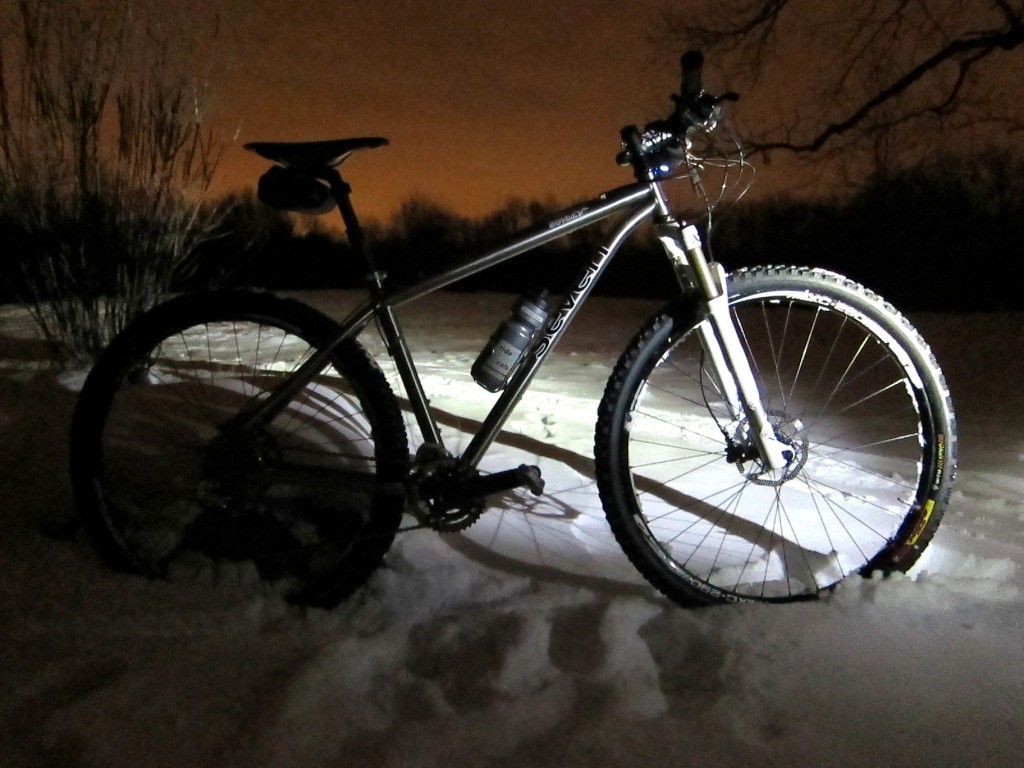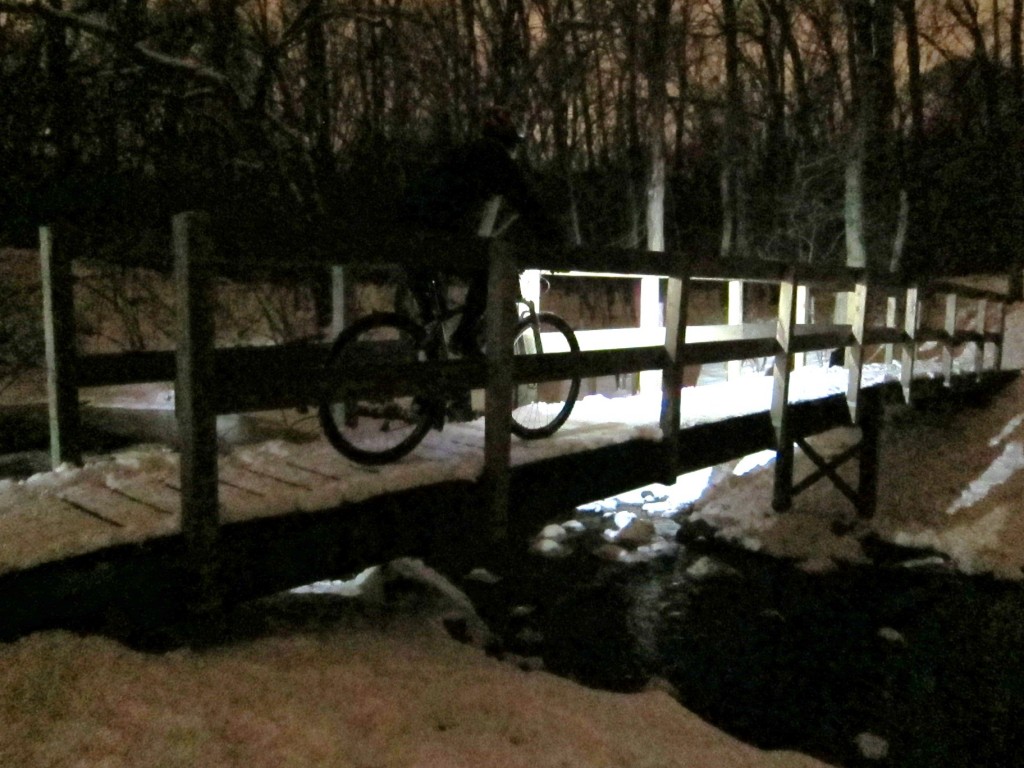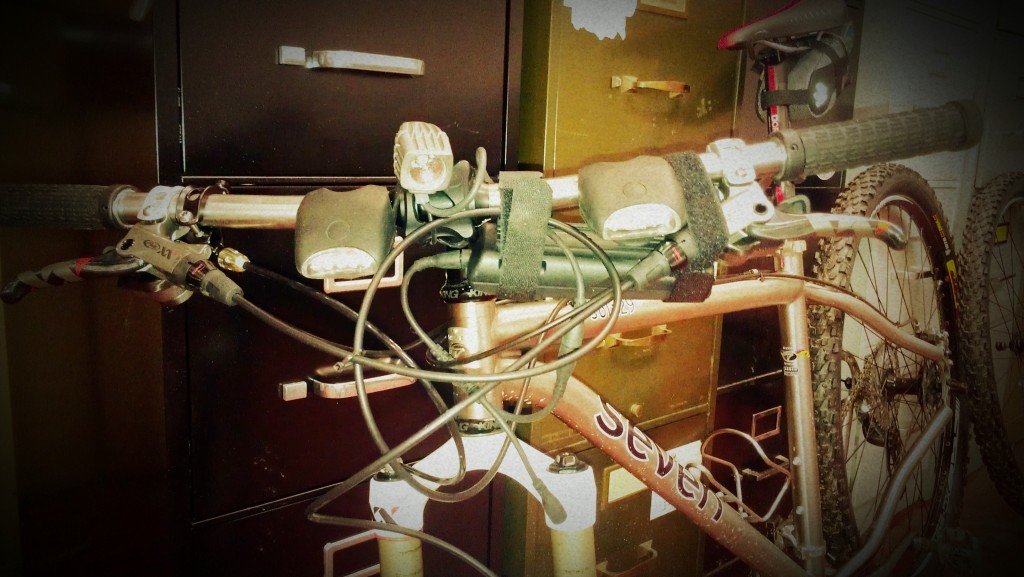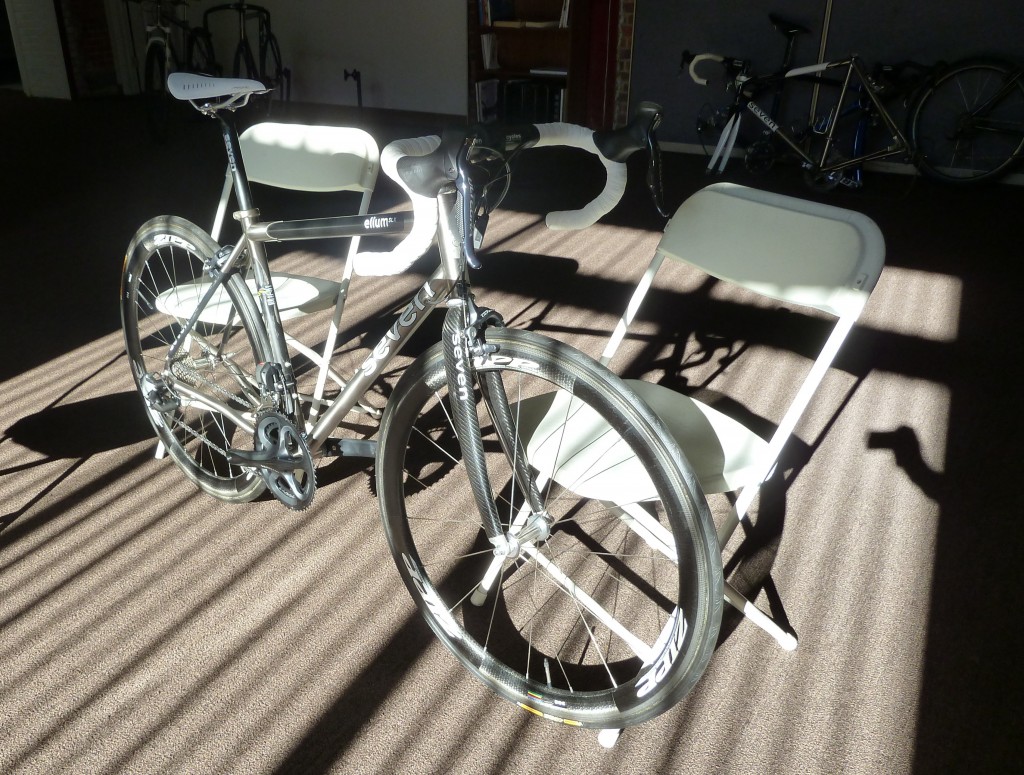
When the snow flies and the temperature yo-yos, you have to change your game plan. At Seven, we try to stay on the bike, outside, as much as we possibly can. There’s no shame in retreating to the rollers or a trainer, but “stationary bike” is a contradiction in terms, right?
Trail riding is an even bigger challenge. On top of the snow/ice/snow mix, the sun sets early, so you need a good light. The upside to snow riding after dark is that the white ground cover amplifies your light. And you need all that light, because traction becomes a random event. Choosing the right line can mean the difference between staying on the bike and sliding down the trail on your butt.
Best also to bring a sense of humor.
To be really successfulon the snow ride, you have to change your basic expectations. That feeling of flow you get from riding dirt in summertime is not available. You have to replace it with the simple joy of being there, of being out in the woods when no one else is there, when the trees rock gently in the wind and the squirrels stay home to feast on winter stores.
It’s so nice to slip and slide and grind your way into the winter woods at night, and then stop there, turn off your lights and let the darkness close in on you. If it happens to be snowinglightly at the time, the sound of the flakes flitting against the already fallen snow is absolute magic.

Back on the bike, staying upright is the biggest challenge, that and keeping your feet dry. The reward is in the adventure, in going someplace that’s hard to get to, and in staying on your bike and moving forward when most “sensible” folks are at home, on the couch.
We’re really lucky that people are riding our bikes all year-round in all sorts of weather on every continent – except Antarctica…as far as we know. We don’t, strictly speaking, have to be out on the trail in the middle of winter, but in addition to loving the outdoors and the challenge of riding through the winter, we feel we owe it to our riders to experience what they experience. It helps us build better bikes, and of course, it makes a hot cup of coffee taste that much better.








